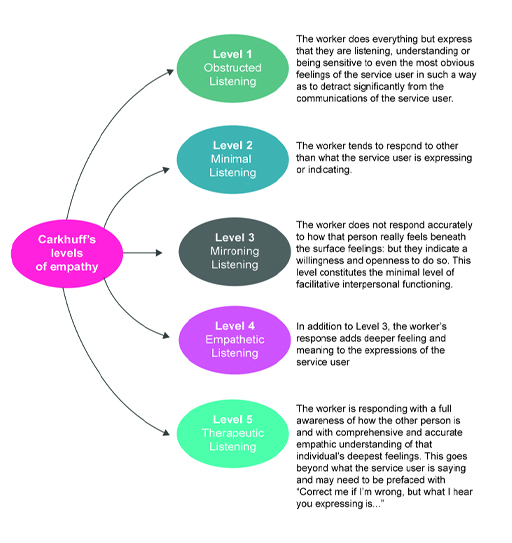Introduction
Parenting is one of life’s most rewarding yet challenging roles. Every parent wants to nurture happy, confident, and resilient children who thrive in their relationships and pursuits. Positive parenting is an evidence-based approach that focuses on fostering these qualities by building strong connections, teaching life skills, and encouraging positive behavior—without the need for fear or punishment.

Parenting
Parenting is the process of raising and nurturing children to ensure their physical, emotional, social, and intellectual development (Bornstein, 2012). It involves providing guidance, discipline, support, and love to shape a child’s future behavior and well-being.
Positive Parenting refers to a supportive and nurturing approach that fosters a child’s self-esteem, emotional security, and social competence. It includes warmth, encouragement, and consistent discipline without harsh punishment (Seay et al., 2014).
- Positive parenting is crucial for a child’s cognitive and emotional growth.
- Research suggests that children raised with positive parenting techniques exhibit better academic performance, self-regulation, and resilience (Sanders, 2012).
- Encouraging communication, setting clear expectations, and reinforcing good behavior through praise and affection help in shaping a well-adjusted individual.
Negative Parenting includes authoritarian, neglectful, or overly permissive approaches that can lead to behavioral issues, low self-esteem, and emotional distress in children (Belsky, 1984). It may involve excessive control, lack of emotional support, or inconsistent discipline.
What Is Positive Parenting?
Positive parenting is centered on the idea that children thrive when they feel loved, understood, and guided rather than controlled or harshly disciplined. The approach combines principles of mutual respect, emotional support, and consistent boundaries.
At its core, positive parenting aligns with-
- Attachment Theory (Bowlby, 1969)- Emphasizes the importance of secure bonds between children and caregivers for healthy emotional and social development.
- Social Learning Theory (Bandura, 1977)- Highlights the power of modeling positive behavior, showing that children often imitate the actions and attitudes they observe in their parents.

Instead of focusing on punishment or enforcing rigid rules, positive parenting seeks to nurture a child’s intrinsic motivation to behave well. It provides children with the emotional tools and secure foundation they need to navigate life’s challenges.
Read More- Growth Mindset
The Science of Positive Parenting
The benefits of positive parenting go far beyond warm family interactions. Neuroscience and psychology show that early interactions with caregivers profoundly shape a child’s development, influencing their behavior, emotional regulation, and even brain structure.
- Brain Development- Studies reveal that nurturing parenting practices support the healthy growth of the prefrontal cortex, the part of the brain responsible for self-regulation, decision-making, and empathy (Schore, 2015).
- Stress Management- Children raised in positive environments show lower levels of cortisol (the stress hormone), which contributes to better emotional health and resilience.
Research also links positive parenting to-
- Reduced Behavioral Problems- A meta-analysis published in Developmental Psychology found that positive parenting reduces aggression and oppositional behavior in children (Pinquart, 2017).
- Higher Academic Achievement- When parents model problem-solving and a growth mindset, children are more likely to develop perseverance and curiosity, essential traits for academic success.
- Stronger Social Skills- Positive parenting fosters empathy, cooperation, and communication skills, helping children build meaningful relationships throughout their lives.
Practical Strategies for Positive Parenting
Some practical strategies to adapt positive parenting include-
1. Foster Emotional Connection- Children are more likely to cooperate and respect boundaries when they feel emotionally connected to their caregivers. Simple gestures like spending quality time together, listening without judgment, and expressing affection go a long way in building this bond.
2. Practice Active Listening- Pay close attention to your child’s words, tone, and body language. Reflect back what you hear to show understanding. For example-
-
- Child, “I’m mad because Ravi didn’t play with me at recess.”
- Parent, “You felt left out, and that made you upset. That’s really hard.”

Validating their feelings helps children feel seen and teaches them to articulate their emotions.
3. Use Positive Discipline- Replace punishment with discipline techniques that focus on teaching and problem-solving. Instead of saying, “You’re grounded for not doing your homework,” try: “How can we make sure homework gets done on time tomorrow?”
4. Model Empathy and Self-Control- Children learn from observing their parents. By staying calm in stressful situations, apologizing when you’re wrong, and treating others with kindness, you provide a powerful example of emotional intelligence.

5. Encourage Autonomy- Allow children to make age-appropriate decisions, even if it means learning from mistakes. For instance, letting a child choose their outfit—even if it’s mismatched—teaches decision-making and fosters confidence.
6. Use Reinforcement Over Punishment- Rewarding positive behavior with praise, privileges, or small rewards encourages children to repeat it. For example- “Thank you for putting your toys away! It shows how responsible you are.”
Overcoming Common Challenges
Positive parenting is not without its difficulties. Parents often face moments of frustration, fatigue, or doubt. Here’s how to navigate common challenges:
- When Emotions Run High- If you feel overwhelmed, take a moment to breathe and compose yourself before responding. Remember, it’s okay to say, “I need a minute to think about this.”
- When Boundaries Are Tested- Setting and enforcing boundaries is a crucial part of positive parenting. Be consistent yet flexible, adjusting rules as your child grows and their needs change.
- When Mistakes Happen- Parenting is a journey of growth, not perfection. If you react harshly in a moment of stress, apologize to your child and explain how you’ll handle things differently next time. This models accountability and resilience.
The Long-Term Impact of Positive Parenting
The benefits of positive parenting extend well into adulthood. Adults who experienced supportive, respectful parenting are more likely to have secure relationships, strong problem-solving skills, and high self-esteem. They are also more likely to parent positively, creating a ripple effect across generations.
Positive parenting is not about preventing all challenges but equipping children with the tools to face them confidently. By fostering emotional intelligence, resilience, and a strong sense of self-worth, parents lay the foundation for their children’s lifelong success and happiness.
Small Steps, Big Impact
The beauty of positive parenting is that it doesn’t require perfection—just a willingness to approach each day with patience and love. Small, intentional actions, like listening with empathy or praising effort, can create lasting positive effects.
Remember, positive parenting isn’t just about raising happy kids. It’s about building a joyful, respectful relationship that strengthens over time. So, embrace the journey with compassion for your child—and yourself.
Participate in an Interesting Research
This research focuses on understanding the relationship between certain parenting techniques and psychological attributes.
Who is Eligible- Individuals with children/child between the ages of 10-18 years.
What Do I Have to Do?– Fill a Questionnaire
Questionnaire- https://forms.gle/uAat3PLKi5KLq1eu6
QR Code-

For any queries please feel free to contact the investigator at srishti2001sharma@gmail.com.
References
Belsky, J. (1984). The determinants of parenting: A process model. Child Development, 55(1), 83-96.
Bornstein, M. H. (2012). Parenting and child development: Infancy to adolescence. Handbook of Parenting.
Bowlby, J. (1969). Attachment and Loss: Vol. 1. Attachment. New York: Basic Books.
Bandura, A. (1977). Social Learning Theory. Englewood Cliffs, NJ: Prentice Hall.
Pinquart, M. (2017). “Associations of Parenting Dimensions and Styles with Externalizing Problems of Children and Adolescents: An Updated Meta-Analysis.” Developmental Psychology, 53(5), 873–932.
Dreikurs, R. (1995). Children: The Challenge. New York: Plume.
Sanders, M. R. (2012). Development, evaluation, and multinational dissemination of the Triple P-Positive Parenting Program. Annual Review of Clinical Psychology, 8, 345-379.
Seay, D. M., Freysteinson, W. M., & McFarlane, J. (2014). Positive parenting. Journal of Pediatric Nursing, 29(1), 65-77.
Schore, A. N. (2015). “Attachment, Affect Regulation, and the Developing Right Brain: Linking Developmental Neuroscience to Pediatrics.” Frontiers in Psychology, 6, 422.
Skinner, B. F. (1953). Science and Human Behavior. New York: Macmillan.
Subscribe to PsychUniverse
Get the latest updates and insights.
Join 3,022 other subscribers!
Niwlikar, B. A. (2025, January 15). 6 Strategies for Positive Parenting and Interesting Call for Research Participation. PsychUniverse. https://psychuniverse.com/positive-parenting/



